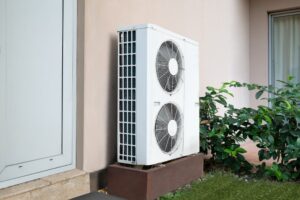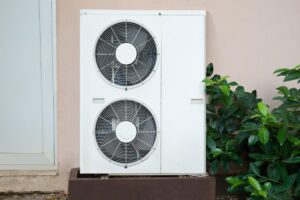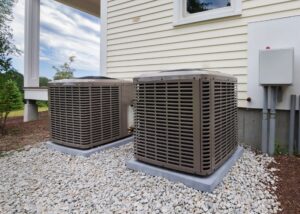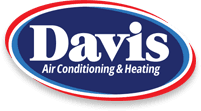Home Sealing and Insulation Can Reduce Your Summer Cooling Costs
Lowering those sky-high cooling bills could be as simple as taking time for home sealing and insulation to improve your home’s ability to contain conditioned air and resist heat transfer. Heat naturally flows toward cooler temperatures. Homes with significant amounts of air infiltration and lacking insulation are much harder to keep cool (or warm in the winter), since heat more easily finds its way in and out.
The best way to get started identifying the problem areas throughout your home is with an energy audit performed by a licensed energy auditor or an HVAC contractor. These specialists will go through your home carefully and use specialized equipment to detect even the smallest leaks. They will also assess the insulation levels throughout your home.
In lieu of a professional energy audit, you can learn where home sealing and insulation additions will cut energy costs by carefully examining your home’s shell, focusing on these areas:
Home Sealing
- Windows and exterior door frames. Cracks can develop around frames and are easily sealed with caulk. If you notice daylight around the exterior doors when they’re closed, apply fresh weatherstripping to stop the leaks.
- Pipes and wires entering your home often have gaps around them. These can be sealed with caulk, or expanding foam if they’re large.
- An open fireplace damper or dryer vent will allow in substantial amounts of hot air, or pull conditioned air out of your home on a windy day. If your dryer vent doesn’t close tightly, you may want to replace it with a new one. Making sure the fireplace damper is fully closed will save on cooling costs.
- The attic can be a source of leaks since much of your home’s infrastructure vents through the roof. Exhaust fans, flues and chimneys may have air leaks around them that can be sealed with expanding foam. In the case of flues and chimneys, you may need to use metal flashing and silicone caulk.Your attic hatch or door also may contribute to air infiltration. By applying weatherstripping and insulating the side that faces the attic with rigid foam insulation, you’ll cut cooling costs. Dropped ceilings and soffits can be sources of air infiltration that you might be able to fill with insulation to stop heat transfer from the attic in the summer.
- If your home has recessed lights that protrude into the attic, you may have air leaks around them. Unless you’re experienced working with wiring, it’s best to ask an electrician or capable contractor to seal these.
Insulation
Home sealing and insulation go hand in hand to create an energy-efficient home. Homes in this region should have between 10 and 20 inches of insulation in the attic to provide the best resistance against heat transfer. Insulation carries an R-value, and every number in this value indicates that the product resists heat transfer for an hour. For example, 10 inches will resist heat transfer for 30 hours and 20 inches for 60 hours.
The easiest insulation products to use in the attic are fiberglass batts or blown-in insulation. Over time, home sealing and insulation can deteriorate, and if your existing insulation has settled or been damaged by moisture, you may want to remove it before adding new products.
Since the attic has the most exposure to sunshine throughout the day, it contributes more to heat gain than the walls do. However, walls on the south and west side of your home that have solar exposure can sustain summertime heat gain. You can spot-check the insulation by turning off the circuit breakers to a few of rooms where you have electrical outlets on exterior walls. Remove the covers and look inside the outlet to see how much insulation is present.
Contractors can add more insulation to walls by using blown-in fiberglass or cellulose. They drill holes into the walls between the studs and add the material. Once finished, they replace the plug they removed. Once taped and painted, the hole won’t be visible.
Proper home sealing and insulation should make a big difference in your cooling bills, and the pros at Davis Air Conditioning & Heating can help you get started with the project. Please contact us to learn more. We’ve provided quality HVAC services on the Gulf Coast, including Galveston, Sugar Land, Houston, Angleton, Fort Bend and Brazoria, since 1971.
Image Provided by Shutterstock.com
You May Also Like

3 Signs of a Failing Heat Pump Compressor in Pasadena, TX
Since the compressor is arguably the single most important part of your heat pump, any malfunctions that it experiences can impede the… Continue Reading 3 Signs of a Failing Heat Pump Compressor in Pasadena, TX…

6 Mistakes To Avoid With Your Heat Pump in Pasadena, TX
Heat pumps offer an efficient way to keep your Pasadena, TX home comfortable. However, you’ll only get the most out of yours… Continue Reading 6 Mistakes To Avoid With Your Heat Pump in Pasadena, TX…

Why Is Hot Air Coming From My AC in Webster, TX?
The purpose of your air conditioner is to keep your Webster, TX home cool throughout the warmer months. Therefore, if your system… Continue Reading Why Is Hot Air Coming From My AC in Webster, TX?…
